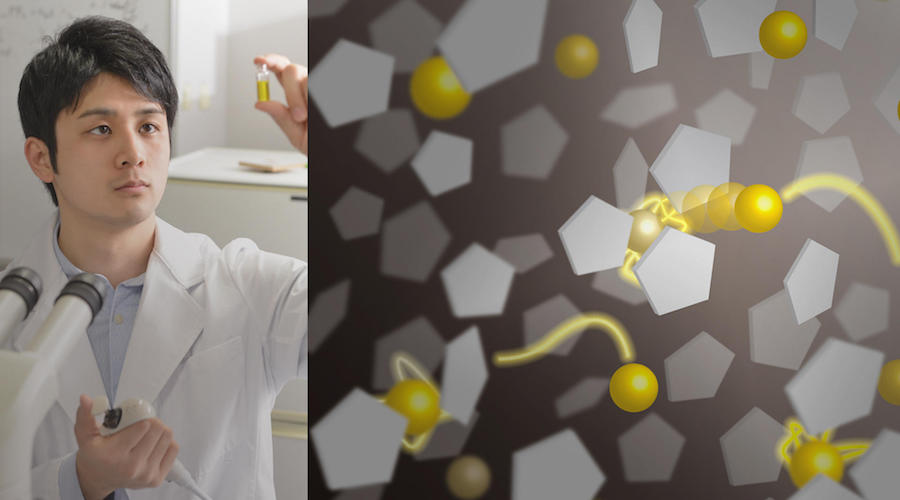
Scientists at the University of Tokyo’s Institute of Industrial Science are using gold ions to understand the behaviour of liquids at the atomic level. This, in turn, would help them determine what are the needed components to design batteries with less volatility and flammability along with better conductivity for more energy efficient devices.
In a study published in the past week in Science Advances, the researchers explain that in order to accomplish such goal, they conducted the first direct observation of gold ions moving in liquid.
Led by the Institute’s Associate Professor Teruyasu Mizoguchi, the team of experts put a liquid into an annular dark-field scanning transmission electron microscopy system. In this system, the brightness of the ion depends on the atomic number and, among metals, gold has one of the highest. Also, the liquid was placed in a vacuum. Normal liquids evaporate when in a vacuum, but this is not so for ionic liquids because of their strong electrostatic interactions.
Their observations revealed that gold ions behave with a distinguishing type of diffusion in this liquid. “We found gold ions were trapped in small spaces or cages. The cages were made by counterionic solvent molecules,” said Tomohiro Miyata, the paper’s lead author, in a media statement. According to Miyata, these cages would move with gold inside of them, but sometimes the gold would escape to enter another cage through a “cage-jump.” These different dynamics were likely due to the heterogeneity of the ionic liquid.
By tracing the movement of gold ions, the researchers were able to then quantify fundamental atomic properties of the liquid, including the diffusion coefficient and the activation energy. “Atomic-scale local dynamics determine macroscopic properties. Using this information, we can improve liquid behavior to build nanoparticles and catalyze chemical reactions,” Mizoguchi explained in the same press release. Such development is expected to provide a basis for more energy efficient devices.